I have been focusing on BBA's French Bread recipe. I've gotten some tasty loaves, but would like more a open crumb. Would love some tips! (I'm a noob, so go easy on me! lol)
The first few times I made this recipe, I used my KitchenAid to mix it. After watching some videos, I decided to try hand mixing. But it's so sticky! So after 10 minutes kneading on the counter, I switched to a series of stretch and folds.
So, here's what I did today:
- BBA's French bread, 65% hydration (not including pate fermentee! i don't know how to determine total hydration)
- flour is 50% Gold Medal AP, 50% Gold Medal bread flour (normally I use KAF but the store was all out! GM is my backup supply)
- 160% pate fermentee
- 1.9% salt
- .55% yeast
- water 65%
- mix ingredients
- 60 min autolyse
- 10 min hand mixing
- S&F #1
- 30 min rest
- S&F #2
- 30 min rest
- S&F #3
- 30 min rest
- S&F #4
- preshape & rest
- shape
- bake
Below are a series of photos from start to finish. As you can see, I was able to form into a ball with decent surface tension after the final S&F. However, when I went to shape it, it was so slack (and sticky!) that it was really hard to shape well. I'm assuming the lack of surface tension in the final shape is why I didn't get much spring.
So...... how can I improve this? More S&Fs? Is there a better way to shape slack, sticky dough? And, if my goal is to achieve a more open crumb, is there anything else I should try to do?
Thanks :)
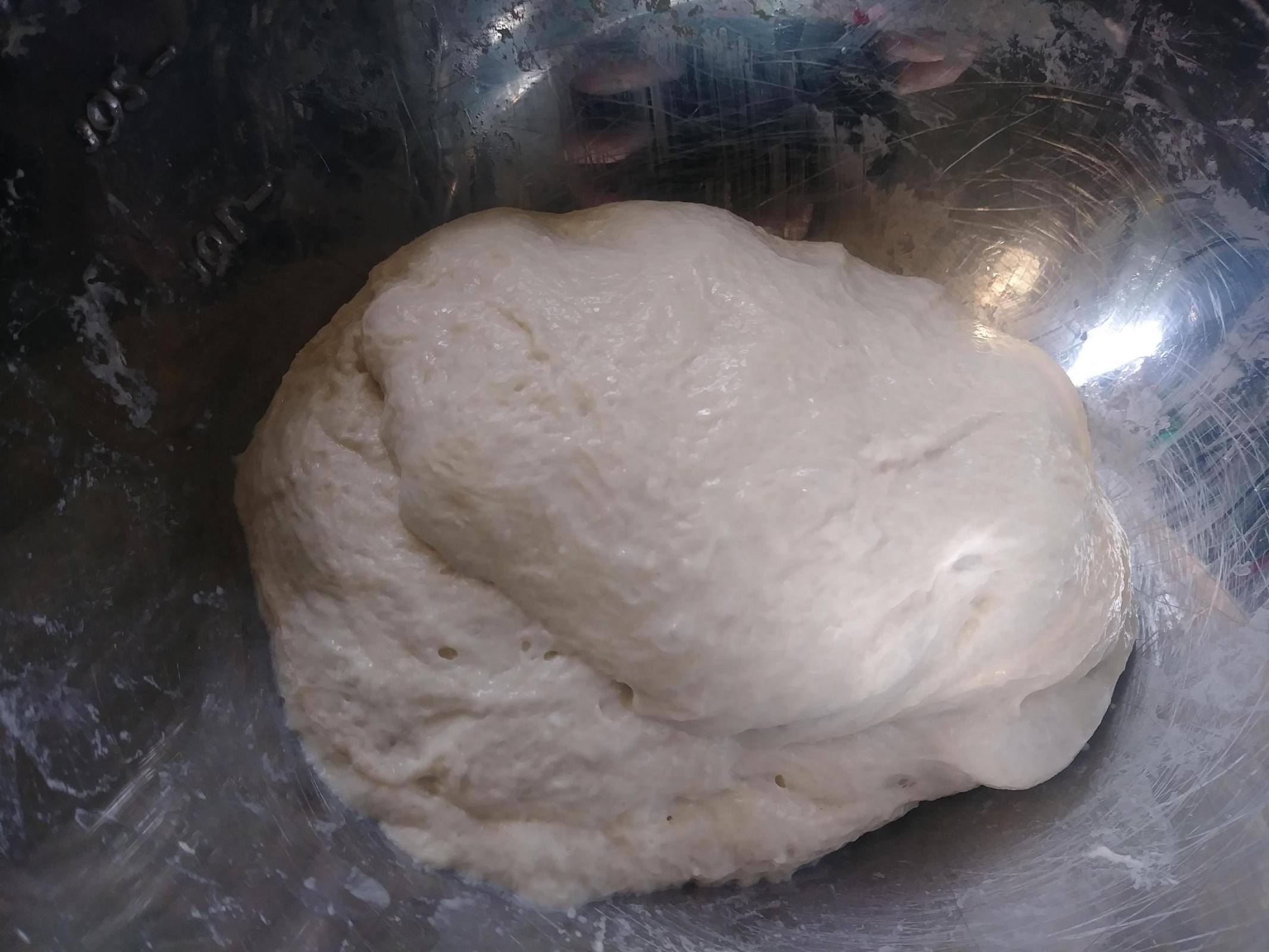
^ After the 3rd S&F
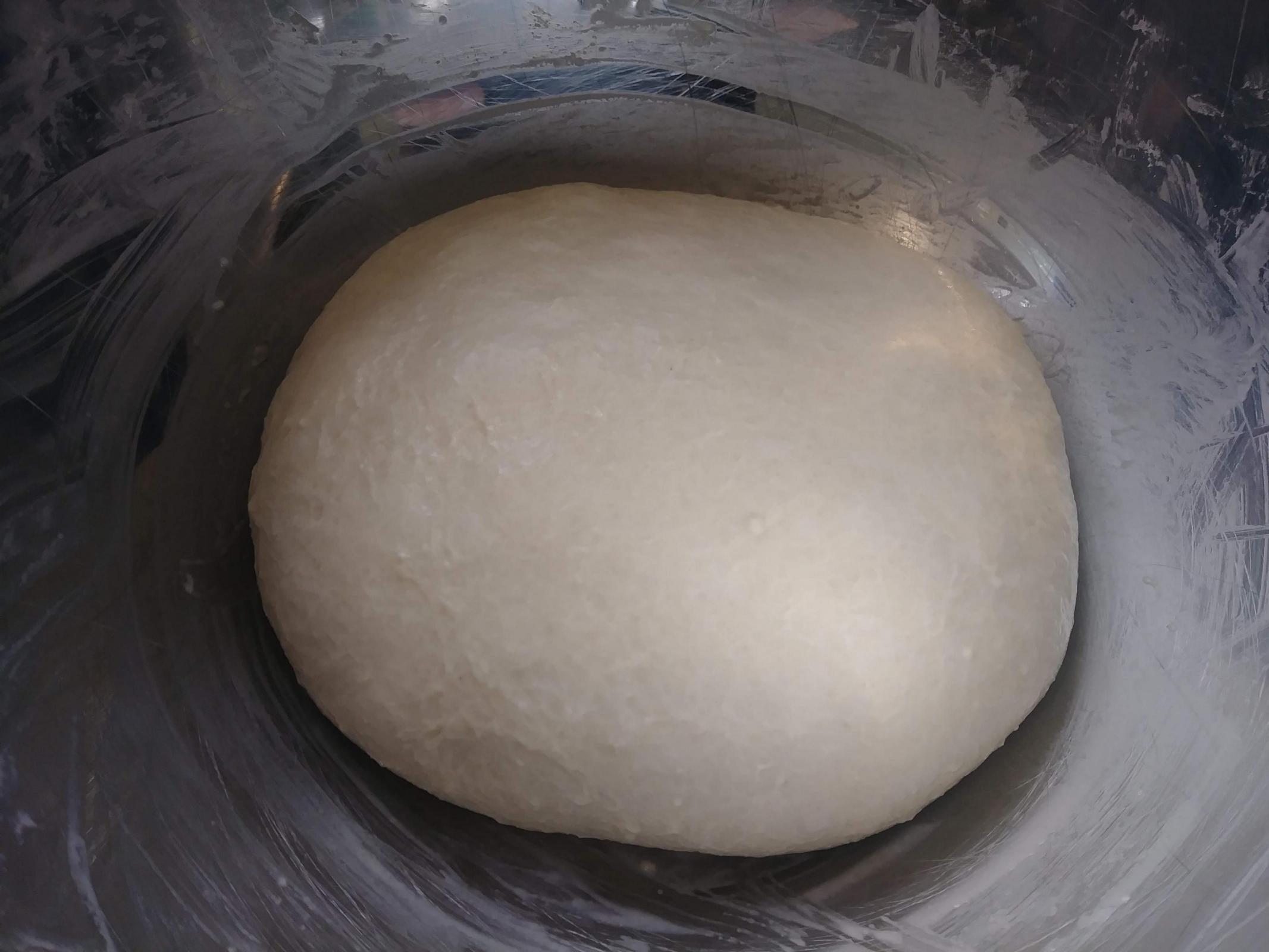
^ I was able to form a nice ball after the 4th and final S&F
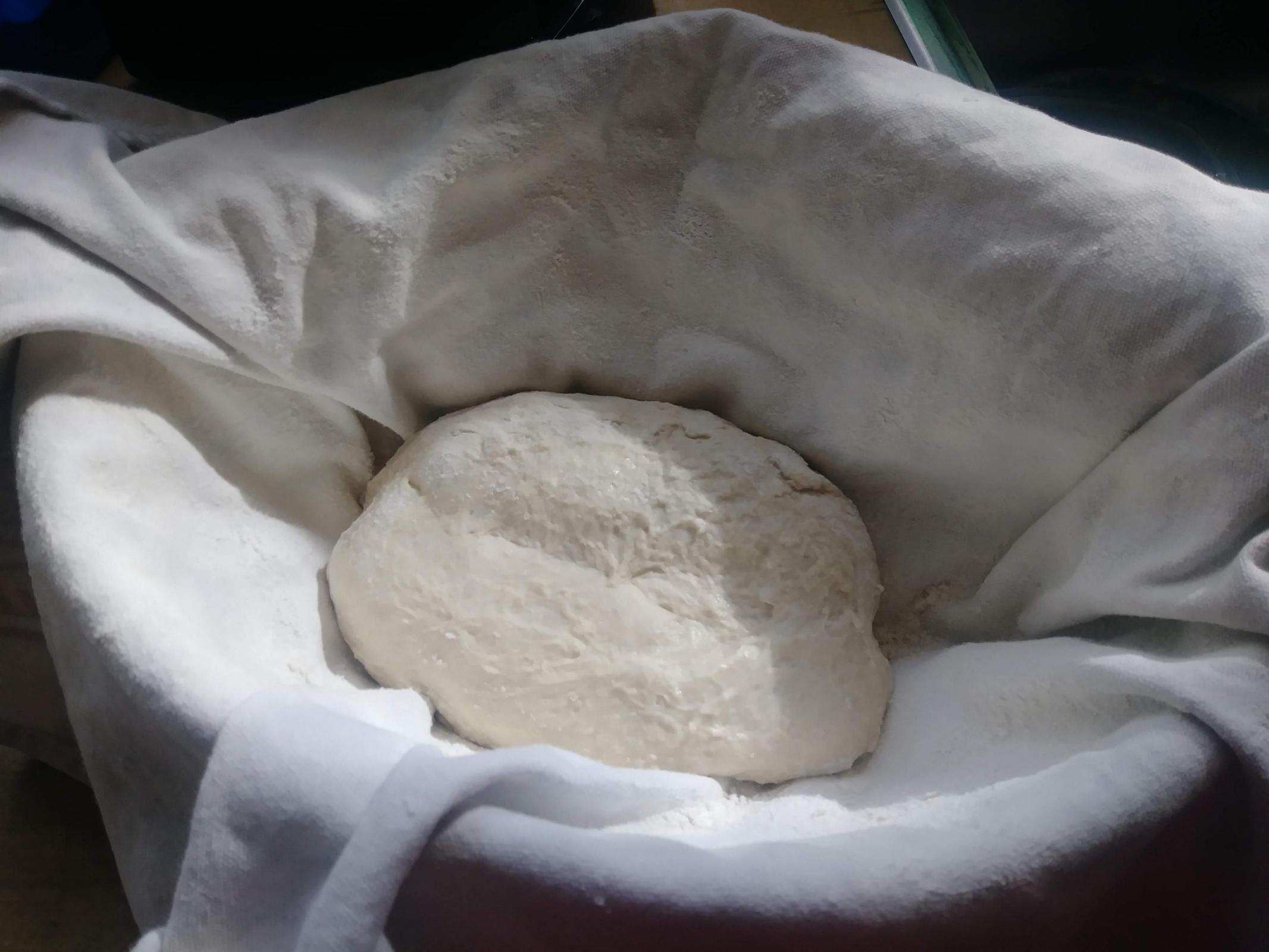
^ Pretty sloppily-shaped, because the dough was so slack and sticky that it wouldn't keep shape! (also, you can't see, but there are rolled-up towels underneath that cloth, because the basket was too large for this loaf)
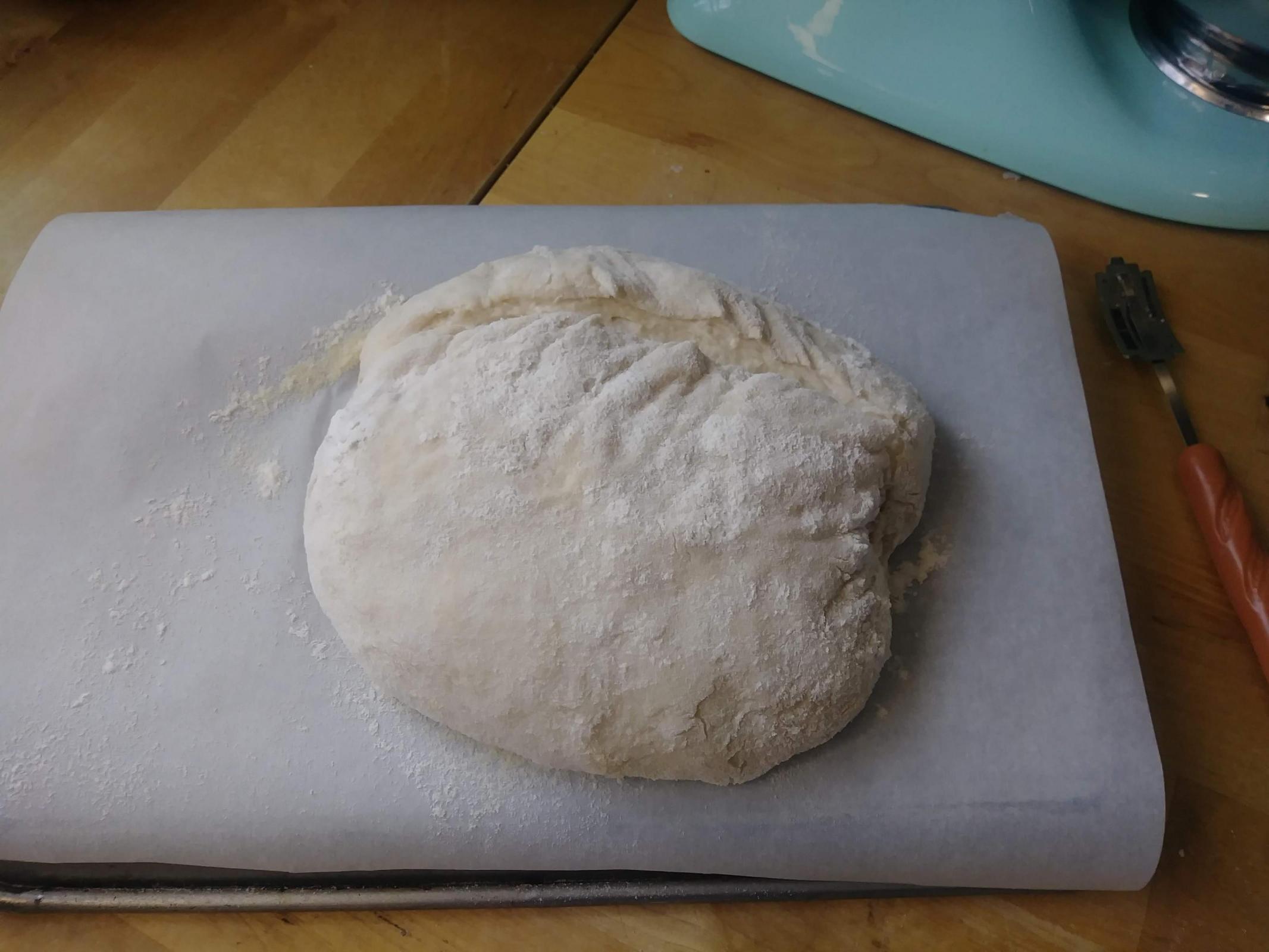
^ post-scoring... a sad soupy loaf :(
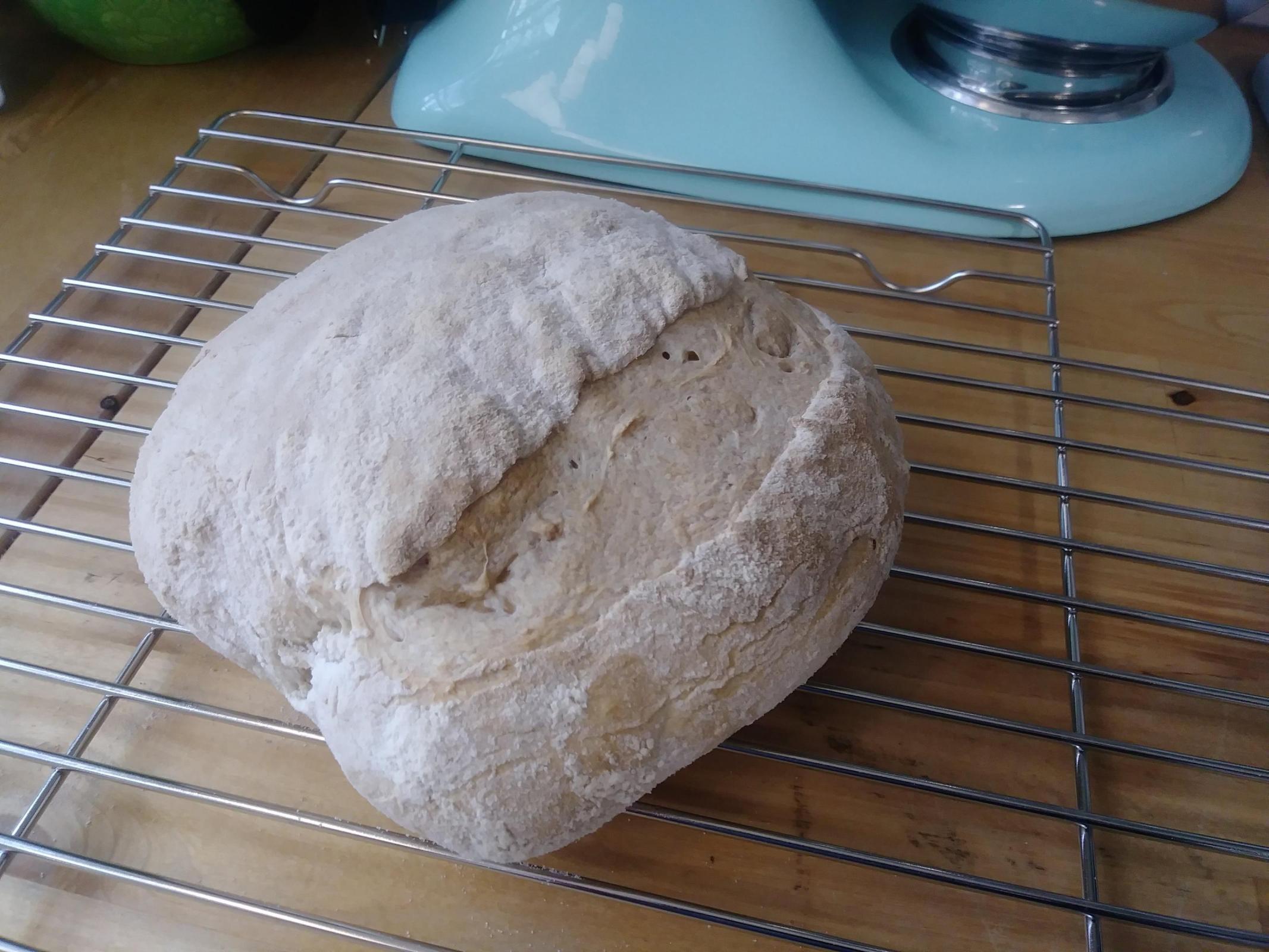
^ the color is off because I used too much flour (was trying to be careful that the loaf wouldn't still to the cloth during the final prove, but it was clearly too much! the bottom has a much prettier golden color)
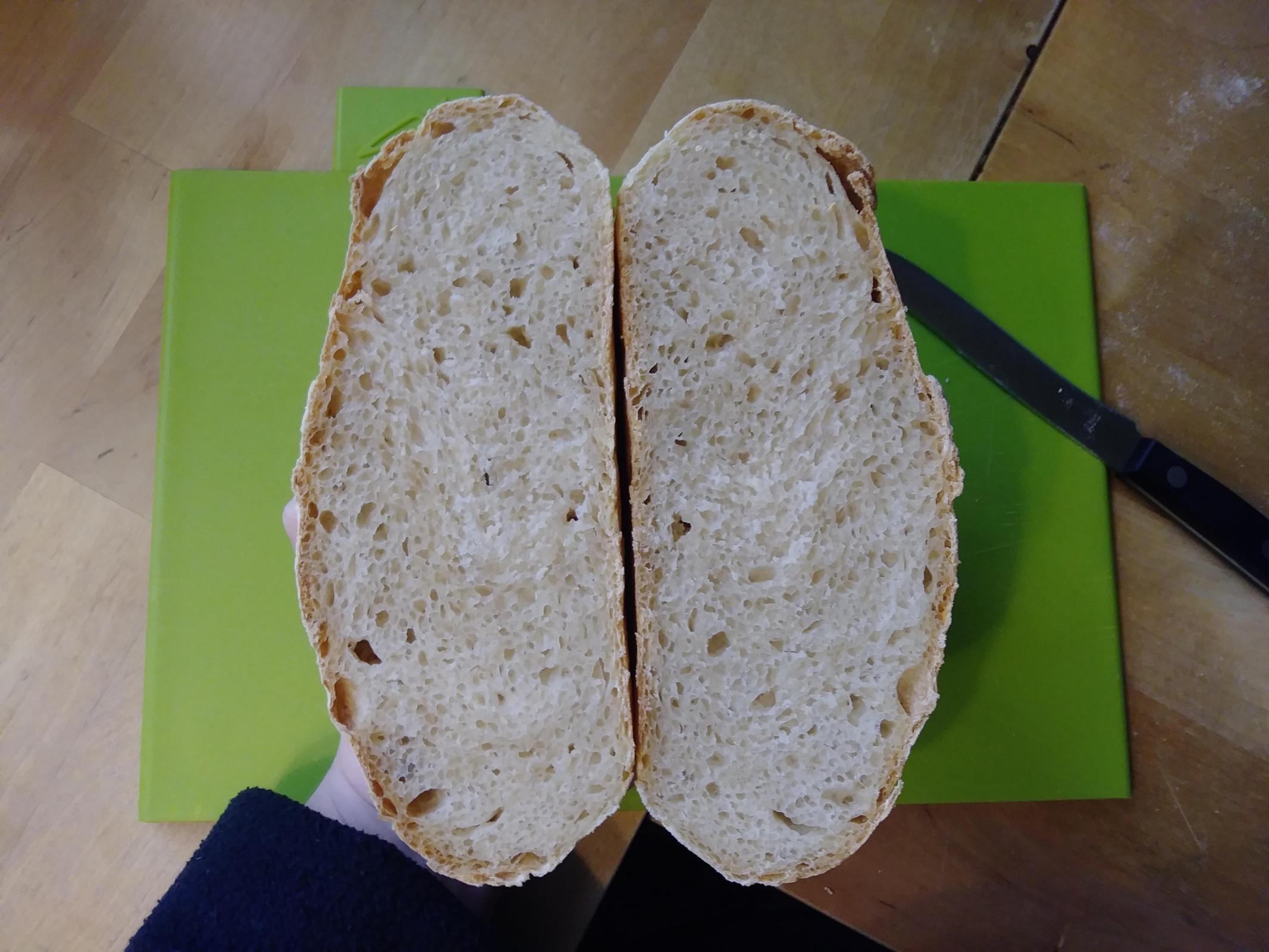
^ sigh.... not what i was hoping for
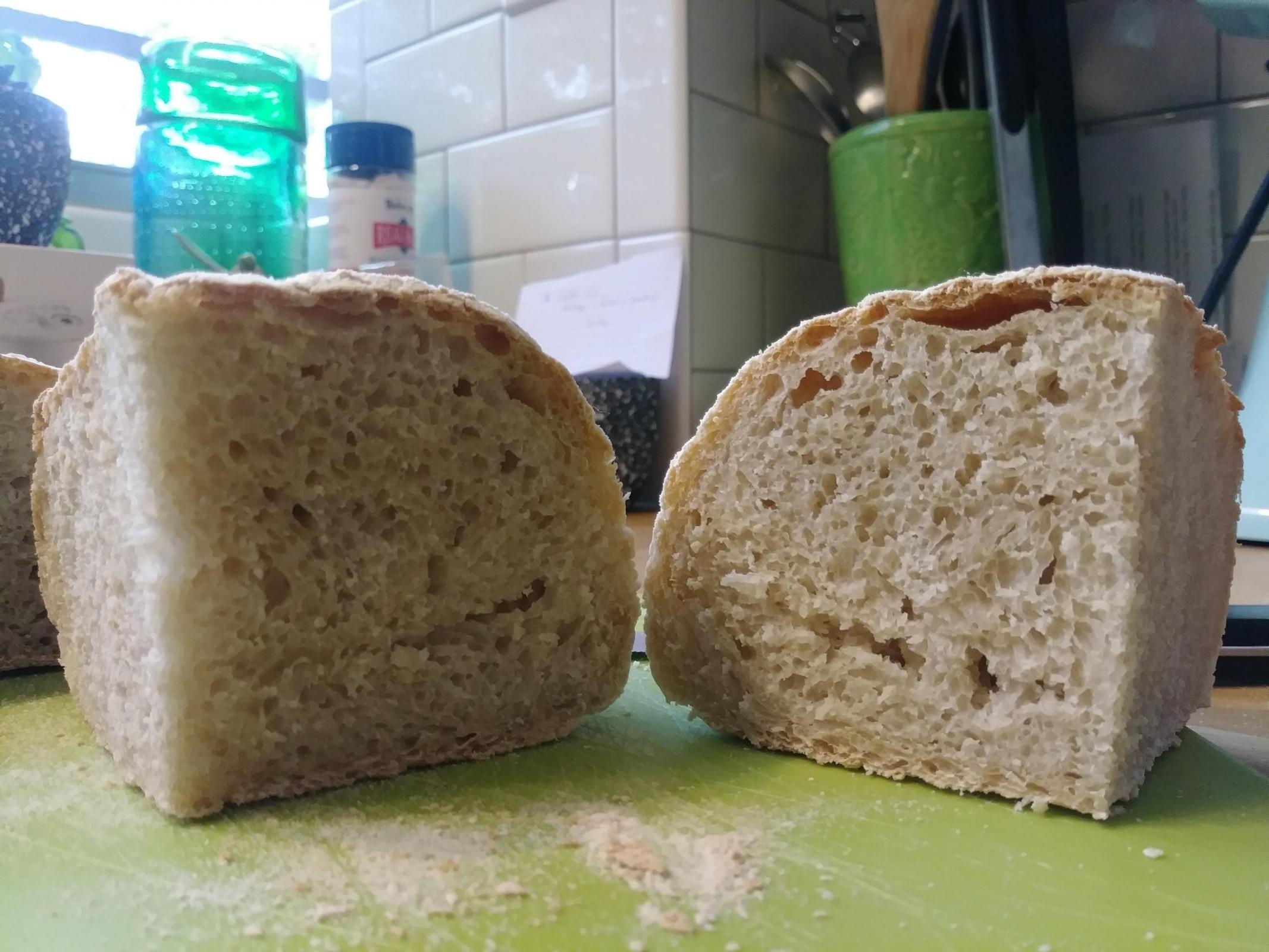
^ again, not what i was hoping for.... but it was delicious! and, i think it was a bit creamier than previous loaves, unless i was imagining it....
This does look like tasty bread. A couple thoughts.
BBA's pate fermentee has 65% hydration, and his French bread recipe adds flour and water in the same ratio, so total dough hydration should hold steady at 65 percent. A 65% hydration dough should come together pretty quickly and be elastic/springy rather than slack/sticky, so you might re-check quantities.
The BBA "French Bread" appears to be aimed at baguettes, which get rather minimal shaping because you don't want to degas them. Baguettes have a small cross section and get a really hot, fast bake, all of which work for more openness and spring. That's not to say you can't get more openness in a bigger loaf, though.
Maybe another suggestion is the old adage to watch the dough rather than the clock, though that's frustrating when you are starting out, because you may not be sure what to watch for! Ideally you want a pillowy dough before you go into the oven.
Re: your comment about calculating hydration. Hydration is water:flour ratio, by weight. Add up all the water weight, the divide it by all of the flour weight. This means all water and flour, whether it be from poolish, biga, preferment or the main dough.
I suggest you cook the bread at a higher temperature, for the same or longer time as you have done so far. To my eye, the loaves look undercooked. I'm sure they are tasty, but they could be tastier and more attractive (to my eye).
Stickiness is handled in two ways, depending on where you are in the process. During the stretch/fold process, keep the work surface and your hands wet. Yes, wet. A film of visible liquid water. During shaping, careful use of flour on the work surface, and dough surface is needed. Plus a careful touch with the hands. In summary, use water and flour, for the two different stages of dough working.
Regarding open crumb, why do you seek this? It is purely aesthetic and does nothing for flavor. It is something "trendy" in bread baking, and not part of the core art or discipline. Look at European bread, in particular German bread. Germans are the global leaders in bread culture. Open crumb is not a goal being sought. Something to think about.
Your crumb looks fine.
Watch the six minute video on this page. Turn the volume off if you don't speak German. The bread and techniques in the video are beautiful. https://www.baeckerhandwerk.de/baeckerhandwerk/die-deutsche-brotkultur/
Let's see if we can track something down.